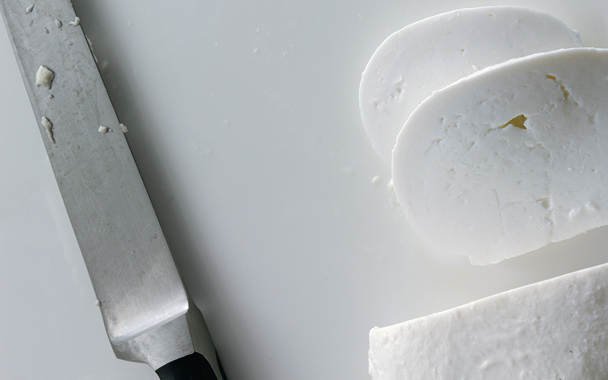Late last summer I became obsessed with making mozzarella cheese from scratch. It was early September, a fact that would be entirely insignificant were it not for the exorbitant price of gasoline. At the time my obsession sank its hooks in me, gas was hovering around four dollars a gallon. Even after months of ever-creeping gas prices to get me used to the idea, four dollars a gallon still sounded like crazy talk; it was unconscionable. Those were the thoughts going through my mind when I passed my favorite cheese shop and saw a cheese-making kit sitting nobly on display. Of course, I bought it.
The kit had everything I’d need: salt, citric acid, rennet, cheesecloth, a thermometer. All I had to supply was the milk.
So I went to the supermarket and bought a gallon of organic whole milk—FOR SEVEN DOLLARS! The local (nonorganic) version would have cost me nine. And from that egregiously expensive gallon of completely renewable milk I ended up with less than one pound of cheese.
And that cheese was not very good. In fact it was bad. It was like eating tasteless rubber. I was crushed, and out seven bucks.
As it turns out, mozzarella cheese is not that easy to make. Actually, that’s not true. It is easy if you follow every step to a T and pay very, very close attention to temperature, timing, and pH level. I never would have discovered this on my own—I had to call in the experts. The first person I turned to was Anne Mendelson, author of the recent book Milk: The Surprising Story of Milk Throughout the Ages. Anne was a huge help, and although she admitted that she also hadn’t had success making mozzarella, she was suspect of the amount of acid in my recipe. It seemed high. That, she said, would make the cheese rubbery. I also contacted Paula Lambert of the Mozzarella Company. She suggested increasing the curd’s resting time. That, she said, would add flavor.
I realize you may not yet feel better about the whole high-gas-price situation or the whole high-milk-price situation, but fear not; there’s good news here. After only about eight tries (and, like, $56 worth of milk), the cheese is delicious. It’s creamy and sweet with a soft inside and the perfect amount of chew. It is completely worth the money, especially if your accounting department will reimburse you for the milk, like mine has.
If you don’t have a large publishing firm to cover your lactose habit, here’s all you need to do:
1. Sell your car and buy a bicycle.
2. With the money you received from your gas-guzzling jalopy, invest in a cheese-making kit (or its constituent parts).
3. Ride your new bike to the store and buy a gallon of whole milk.
4. Make cheese. (If you actually made it as far as step 4, see here for a recipe).
5. Enjoy your fresh mozzarella for dinner with some heirloom tomatoes, aged balsamic, and a fine Chianti (all of which, together, will still be far cheaper than your monthly car insurance).




 Pinterest
Pinterest


